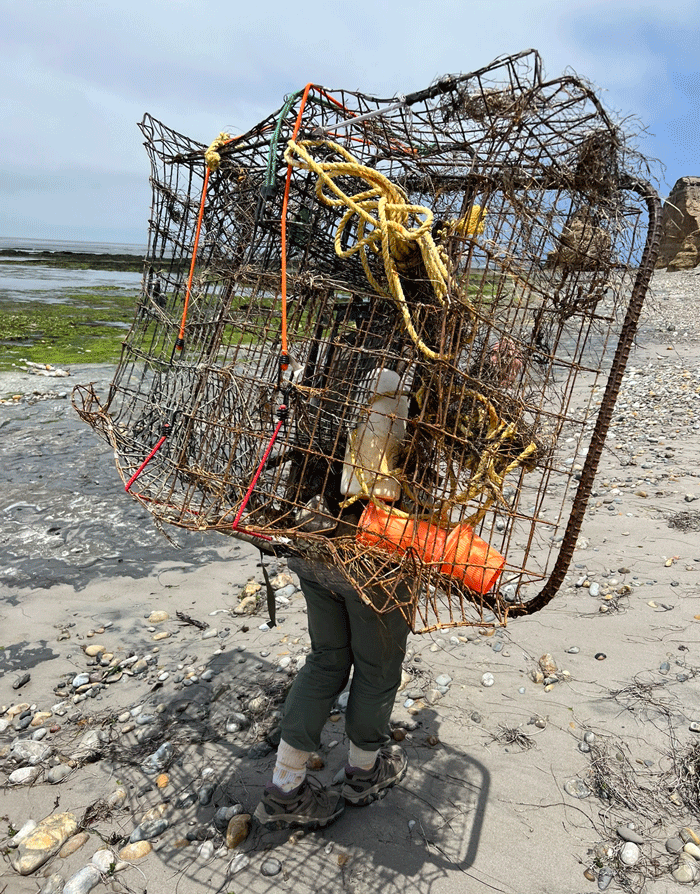Marine Debris Program Supports Monitoring and Clean-up Efforts in the California Channel Islands
JUNE 13, 2022 — During the week of May 23, NOAA Marine Debris Program California Regional Coordinator Christy Kehoe and Marine Debris California Sea Grant Extension Fellow Tanya Torres supported California State University Channel Islands Santa Rosa Island Research Station, a long-term grant partner, on a week-long site visit to remove and assess the amounts, types, and sources of marine debris on the Channel Islands. This three-year project is an extension of past research and collaborative efforts. All participants followed university, state, and federal guidance on health and safety practices.

The native Chumash community called Santa Rosa Island, now within the Channel Islands National Marine Sanctuary, their home and the island still contains thousands of significant and federally protected archeological sites. The Channel Islands National Marine Sanctuary protects 1,470 square miles of ocean waters and serves as habitat for endangered birds, four species of pinnipeds (California sea lions, northern fur seals, harbor seals, and northern elephant seals), and endemic island foxes that don’t live anywhere else in the world.
However, marine debris is common on island shorelines, including lost fishing gear, consumer debris, and microplastics. In coordination with the National Park Service and the California State University Channel Islands team, Christy and Tanya supported the project’s spring effort to identify and track which types of debris are most common across the islands. After completing the monitoring process, all debris was removed for later categorization at the university campus. In total, around 745 pounds of marine debris was collected, including fishing gear (crab traps were roughly 214 pounds), balloons, single-use plastics, a pair of shoes, bottles, and other fragments of debris. This was a complex field operation, requiring coordination of permitting and tides and transporting debris over hard terrain.
The recovered debris will be used by the university's art program for students to use in sculptures.The next site visits are planned for August and November 2022.
OR&R's Marine Debris Program will share more about this site visit in an upcoming blog series this summer. For more information, please contact Christy.Kehoe@noaa.gov and Tanya.Torres@noaa.gov.
